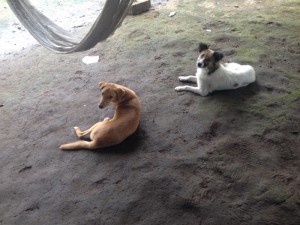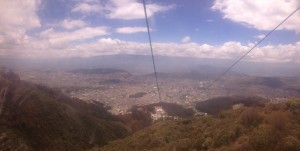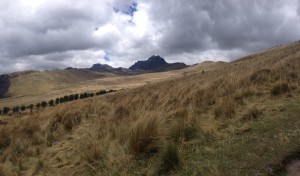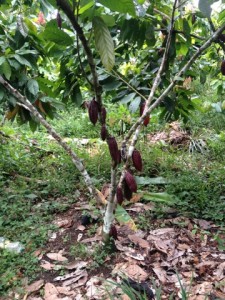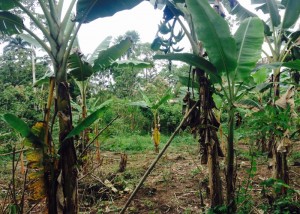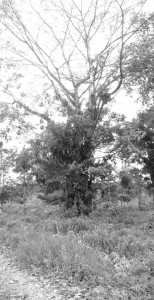My time in Quito has come to an end. In ten hours, I’ll get on a bus for nine hours and travel south, down three hundred miles of the Panamericana highway. I only wish it were during the day, because the Andean scenery is incredible.
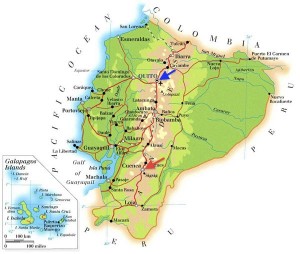
Quito is indicated with a blue arrow, Cuenca with red. Ecuador is only as big as Colorado, but the mountains make for long bus rides.
ISP time is upon us, and at last I’ve sorted out my life, at least for the next four weeks! I’ll be studying urban agriculture in Cuenca, living with a host family, making the acquaintances of engineers and agriculturalists and activists. I’ll be working under the auspices of the municipal (autonomous, decentralized) government – which, frankly, I feel more comfortable with than branches led by El Presidente, who recently challenged another legislator to a fistfight. I won’t name him because he seems to google himself on the daily to find out who’s criticizing – then calls them out in his weekly address to the nation. It’s the quickest path to fame I’ve seen around here.
Back to Cuenca. The two of us with projects there would have left at the crack of the crack of dawn this morning, but then it turned out that that bus didn’t exist. As we are often reminded, nothing goes according to plan in Ecuador. Thankfully, we discovered this detail the night before, saving ourselves a trip to the station. So now we’re on a night bus (service for the stranded witch or wizard) and headed on to the next adventure.
This last week has been exclusively focused on pinning down requirements and logistics for the ISP (Independent Study Project), and there’s been a lot of high blood pressure going around – between students, who decide their topic/destination and fill out paperwork about it, and program directors, who help us arrange everything. Ours is a small group, which makes things easier – I can only imagine going through the process with fifteen people.
Back at the house, all of my belongings have been crammed into two backpacks and a suitcase. The windows are shut, the bed is made, locks are on the luggage, money is stuffed into my socks and the contents of my smaller backpack are meticulously layered in order of priority. I’m always amazed by the way my possessions seem to multiply when it comes time to pack them up. It happens in college dorm rooms, but I wasn’t expecting it here; after all, I am but a humble student, traveling with a week’s worth of clothes and a few necessities. I should be able to whip it all together in an hour or two.
Not so. After 24 hours of sporadic effort, it’s all ready. I’ll arrive in Cuenca early tomorrow, with circles under my eyes and a new pair of hand warmers (courtesy of my fabulous travel buddy, who knits in her free time). Then we’ll embark on our separate adventures.
I hope my next family has dogs.
